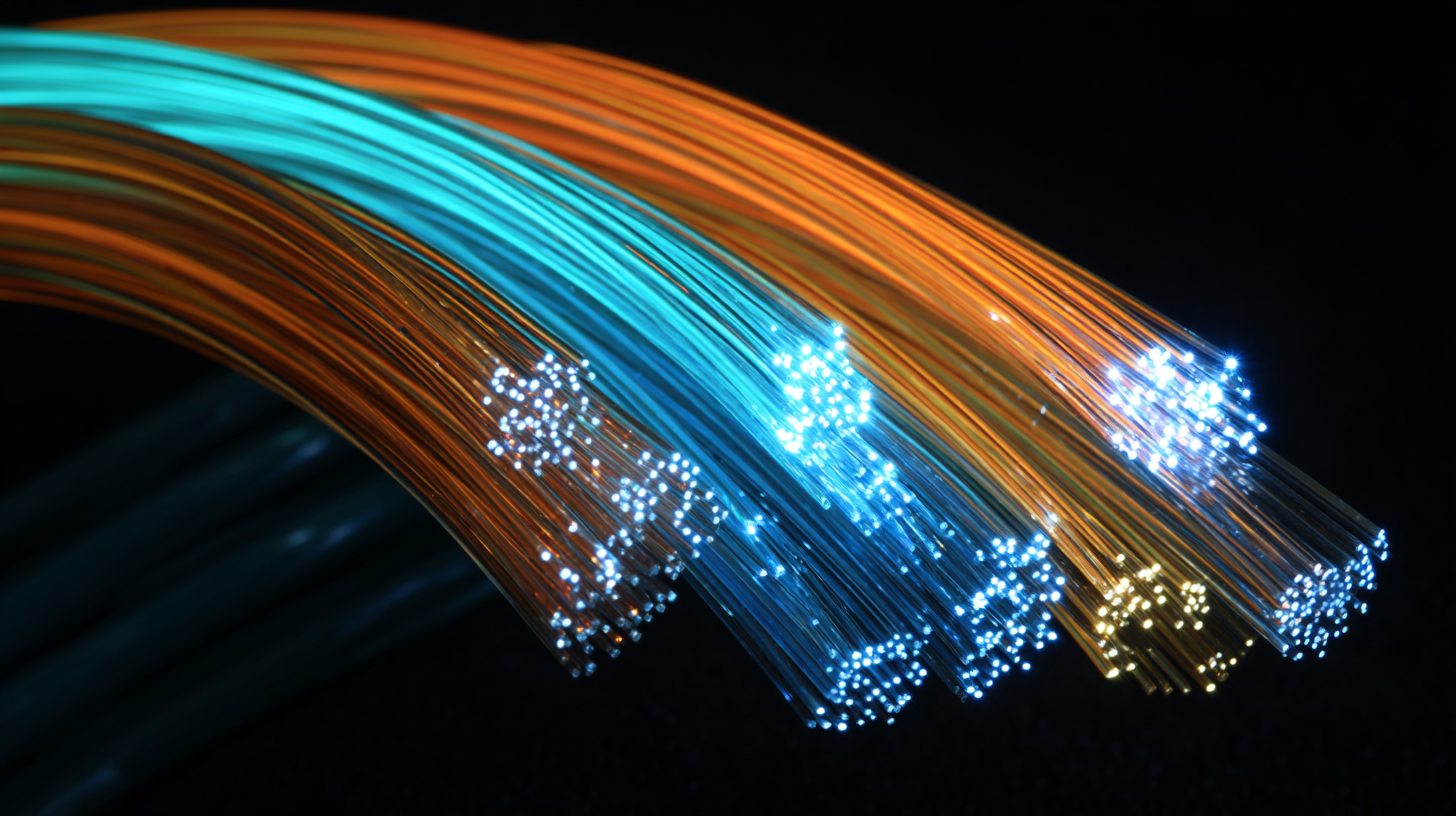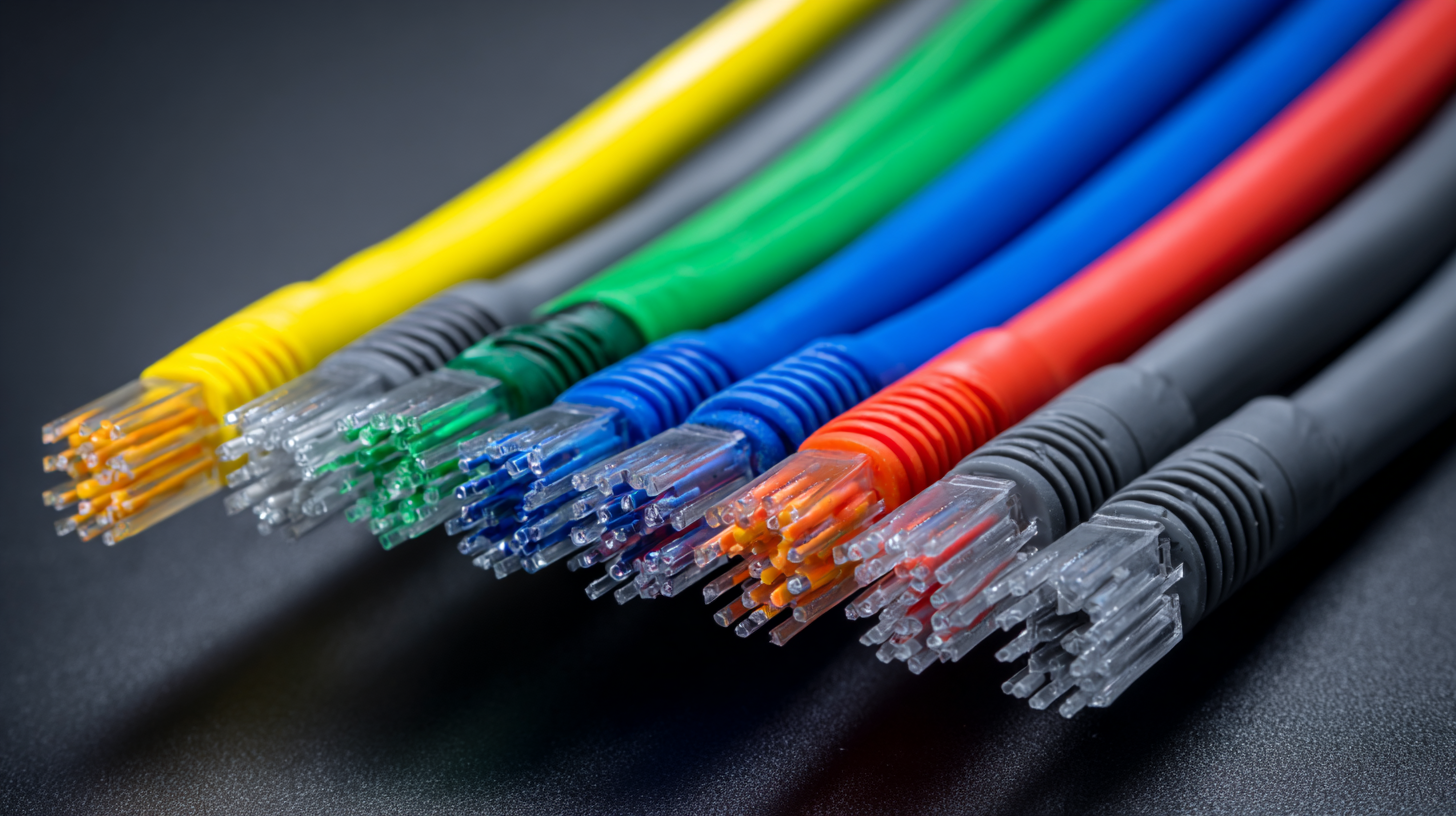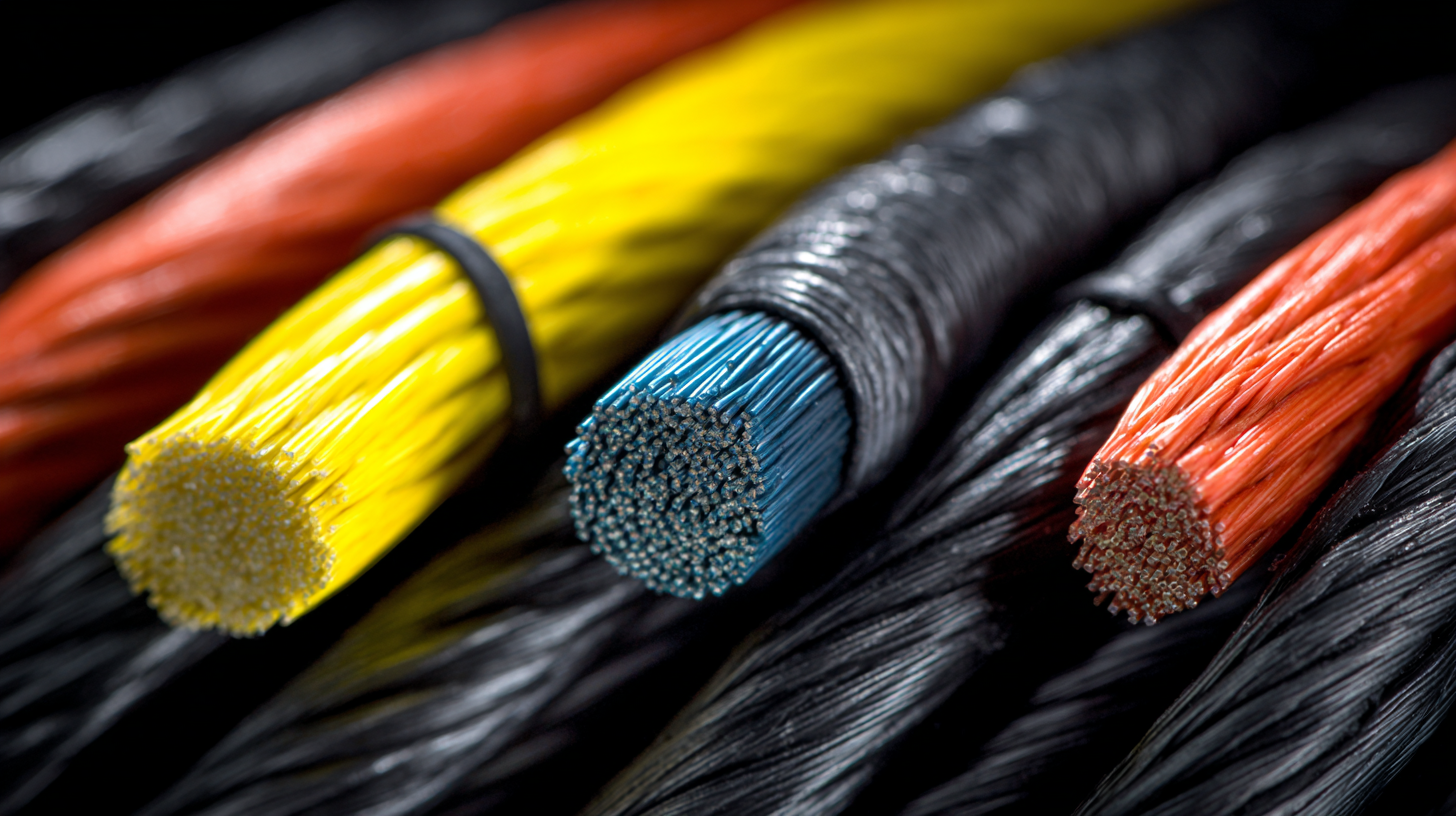What is the Importance of Network Fiber Optic Cable in Modern Communication
In today's digital age, the seamless transmission of data is more critical than ever, with a significant reliance on network fiber optic cable to facilitate high-speed communication. According to a report by the International Telecommunication Union, global internet traffic is projected to reach an astonishing 4.8 zettabytes per year by 2022, necessitating robust infrastructure to manage this growth effectively. Network fiber optic cable stands at the forefront of this evolution, offering unparalleled bandwidth and speed compared to traditional copper wires. As businesses and consumers alike demand faster and more reliable internet connections, the deployment of fiber optic technology has surged, with the Fiber Broadband Association reporting that nearly 40% of U.S. households now have access to fiber optic networks. This blog will explore the pivotal role network fiber optic cable plays in modern communication, highlighting its advantages, applications, and future potential in connecting our increasingly digital world.

The Role of Fiber Optic Cables in High-Speed Internet Connectivity
Fiber optic cables have revolutionized the way we connect and communicate in our digital age. As the backbone of modern internet connectivity, these cables utilize light to transmit data at extraordinarily high speeds, far exceeding traditional copper wire methods. High-speed internet is no longer just a luxury; it has become a necessity for countless applications, from streaming services and online gaming to remote work and telehealth. The ability of fiber optic technology to handle vast amounts of data with minimal latency has made it the preferred choice for internet service providers aiming to meet the ever-growing demand for faster connections.
Moreover, fiber optic cables offer enhanced reliability compared to their counterparts. They are less susceptible to interference from electrical signals, weather conditions, or physical wear, ensuring a stable connection. This reliability is paramount for businesses that rely on continuous uptime for operations. Additionally, fiber optics support higher bandwidths, making them essential for delivering high-definition content and supporting multiple users simultaneously without degrading performance. As cities and communities continue to upgrade their infrastructure to incorporate fiber optic technology, the future of high-speed internet connectivity looks brighter than ever, facilitating a more connected world.
What is the Importance of Network Fiber Optic Cable in Modern Communication
| Feature | Description | Impact |
|---|---|---|
| Bandwidth | Fiber optic cables can support a vast amount of data transmission at once. | Enhances the capacity for future growth in internet usage. |
| Speed | Offers extremely high data transmission speeds up to several gigabits per second. | Supports applications requiring real-time data processing, such as streaming services. |
| Distance | Can transmit data over long distances without significant loss. | Ideal for connecting remote areas and increasing internet accessibility. |
| Interference Resistance | Less susceptible to electromagnetic interference compared to copper cables. | Improves reliability of communication networks. |
| Safety | Non-conductive materials reduce fire hazards and electrical issues. | Enhances safety in the installation environments. |
Advantages of Fiber Optic Technology Over Traditional Copper Cables
Fiber optic technology is revolutionizing modern communication by providing significant advantages over traditional copper cables. One of the most compelling benefits is the ability to handle unlimited bandwidth, which is crucial in today's data-intensive world. Unlike copper, fiber optics transmit data using light signals, allowing for faster data transfer rates and greater capacity. This capability is particularly beneficial for data centers, which are now migrating to fiber optic networks, as highlighted by studies showing that Passive Optical LAN can reduce costs by up to 56% compared to conventional networks.
Moreover, fiber optic cabling is more adaptable and environmentally friendly than its copper counterparts. As educational institutions prepare for future connectivity needs, the shift to fiber optics ensures they can support advanced technologies and the growing demand for high-speed internet access. The aerospace industry is also embracing fiber optics for avionics systems in next-generation aircraft, emphasizing the versatility and reliability of this technology across various sectors. The ongoing expansion of fiber optic networks globally illustrates its pivotal role in shaping the future of telecommunications and connectivity.
How Fiber Optics Facilitate Reliable Communication in Businesses
Fiber optic cables have transformed the landscape of modern communication, particularly in the business sector. With their ability to transmit data at high speeds and over long distances, they have become essential for organizations looking to enhance their operational efficiency. According to a report from the Fiber Optic Association, fiber optic systems can transmit data at speeds up to 100 Gbps (gigabits per second), significantly outpacing traditional copper cables. This high bandwidth allows businesses to handle large volumes of data with minimal latency, making them pivotal for applications such as cloud computing and real-time collaboration.
Moreover, fiber optics provide unparalleled reliability, which is critical for business communications. Studies indicate that fiber optic cables are less susceptible to electromagnetic interference and environmental factors, leading to fewer disruptions compared to their copper counterparts. A report by Deloitte highlights that businesses adopting fiber optic solutions experience up to 50% lower downtime. This reliability is essential for companies that depend on consistent connectivity for remote work, video conferencing, and real-time data sharing.
Tips for businesses considering the switch to fiber optics include evaluating their current bandwidth needs and exploring options for scalability as they grow. Investing in fiber optic infrastructure could not only future-proof communications but also enhance productivity and improve customer service by ensuring seamless connectivity.

Future Trends in Fiber Optic Cable Development and Usage
The rapid advancement of technology is influencing the future trends in fiber optic cable development and usage. With the increasing demand for high-speed internet and reliable communication networks, manufacturers are exploring innovative materials and designs to enhance performance. One significant trend is the shift towards more flexible and lightweight cables, making installation easier in various environments, including urban and rural settings. These improvements aim to cater to the growing number of connected devices, as the Internet of Things (IoT) continues to proliferate.
Additionally, advancements in fiber optics are focusing on increasing data transmission rates and reducing latency. The emergence of multi-core fibers and space-division multiplexing technologies is set to revolutionize bandwidth capabilities, enabling faster internet speeds and more reliable connections. As industries adopt higher bandwidth solutions for applications like 5G and cloud computing, the reliance on robust fiber optic infrastructure will only intensify. Therefore, the future of fiber optic cables looks promising, with continuous innovation driving the evolution of modern communication networks.
Best Practices for Installing and Maintaining Fiber Optic Networks
The installation and maintenance of fiber optic networks are crucial for ensuring reliable and high-speed communication in today's digital landscape. Following best practices during installation can significantly reduce future issues. According to a report by the International Telecommunication Union (ITU), proper handling and installation techniques can decrease fiber optic cable damage by up to 30%. This includes using the right tools, ensuring gentle bending of cables, and adhering to specified installation guidelines to maintain optimal performance and longevity.

Ongoing maintenance is equally important for the sustainability of fiber optic networks. Regular inspections can help detect potential problems early, ensuring seamless communication. A study by the Fiber Optic Association (FOA) indicates that routine maintenance can extend the lifespan of fiber networks by 25% and improve signal quality by mitigating factors such as dust and moisture accumulation. Implementing industry standards and using optical time-domain reflectometry (OTDR) testing for fault detection can further enhance network reliability, allowing businesses to leverage the full capabilities of their fiber optic infrastructure.
Related Posts
-

How to Choose the Right UTP Cat 6 Cables for Your Network Needs
-

10 Amazing Benefits of Using Network Patch Cables for Your Business
-

10 Reasons Why Cat 6 Bulk Cable is Essential for Your Network Installation
-

Common Issues Faced When Sourcing Bulk Cat 6 Cable for Global Supply Chains
-

Innovative Solutions for Enhancing Network Performance with Quality Patch Cables
-

7 Digital Strategies to Optimize Your Network Cable Installation for Peak Performance
